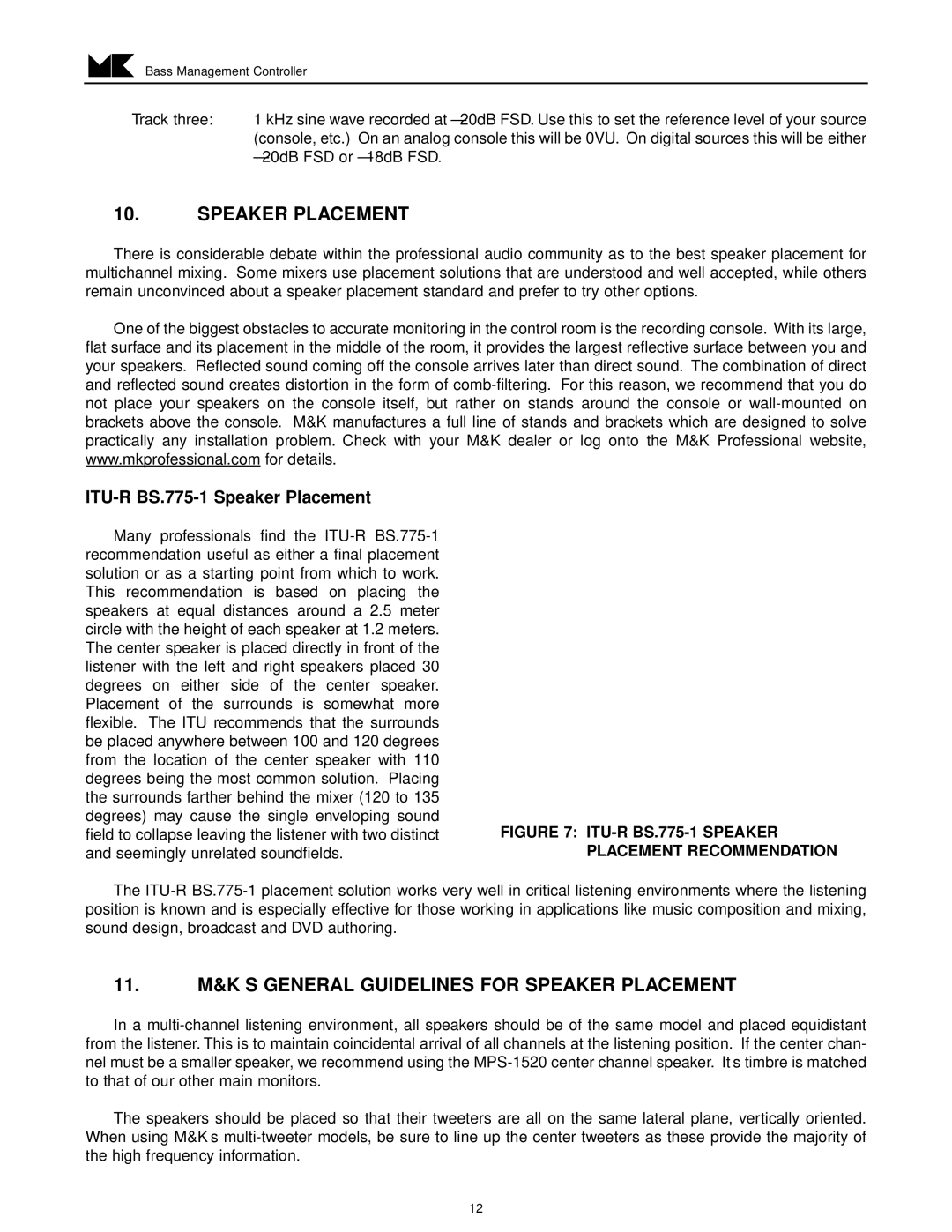LFE-4 specifications
The MK Sound LFE-4 is a highly regarded low-frequency effects (LFE) speaker, designed to deliver exceptional bass response in home theater and professional audio environments. Renowned for its compact design and powerful performance, the LFE-4 is perfect for audiophiles and filmmakers looking for depth and clarity in the sound experience.One of the standout features of the LFE-4 is its advanced driver technology. The subwoofer is equipped with a high-excursion 10-inch driver that ensures a robust low-end performance, capable of reproducing deep bass frequencies with precision and impact. This driver is housed in a sturdy cabinet that is engineered to minimize distortion and resonance, thus providing cleaner sound reproduction.
The LFE-4 also incorporates an efficient built-in amplifier, delivering ample power for both dynamic peaks and sustained low-frequency notes. With an output power of up to 300 watts RMS, the LFE-4 can handle even the most demanding cinematic soundtracks, ensuring that every explosion, rumble, and musical note is felt as much as it is heard. This makes it an ideal choice for home theater setups or studio environments where impactful sound is a priority.
In terms of connectivity, the MK Sound LFE-4 offers various options to accommodate different setups. It features both balanced XLR and unbalanced RCA inputs, allowing easy integration with various AV receivers, processors, and professional sound systems. This versatility in connectivity options makes it adaptable for different environments, whether it’s a home theater or a commercial installation.
Additionally, the LFE-4 is equipped with adjustable crossover settings, enabling users to fine-tune the subwoofer's performance to match their specific speaker configuration. This ensures seamless integration with other speakers in the system, creating a cohesive audio experience that enhances the overall soundstage.
The MK Sound LFE-4 is also designed with aesthetics in mind. Its sleek, understated appearance allows it to blend seamlessly into any decor while maintaining a professional look that signifies quality.
Overall, the MK Sound LFE-4 stands out in the market for its solid performance, versatile features, and commitment to delivering an immersive audio experience. Whether it's for music, movies, or gaming, the LFE-4 ensures that bass is not just heard but truly experienced.

